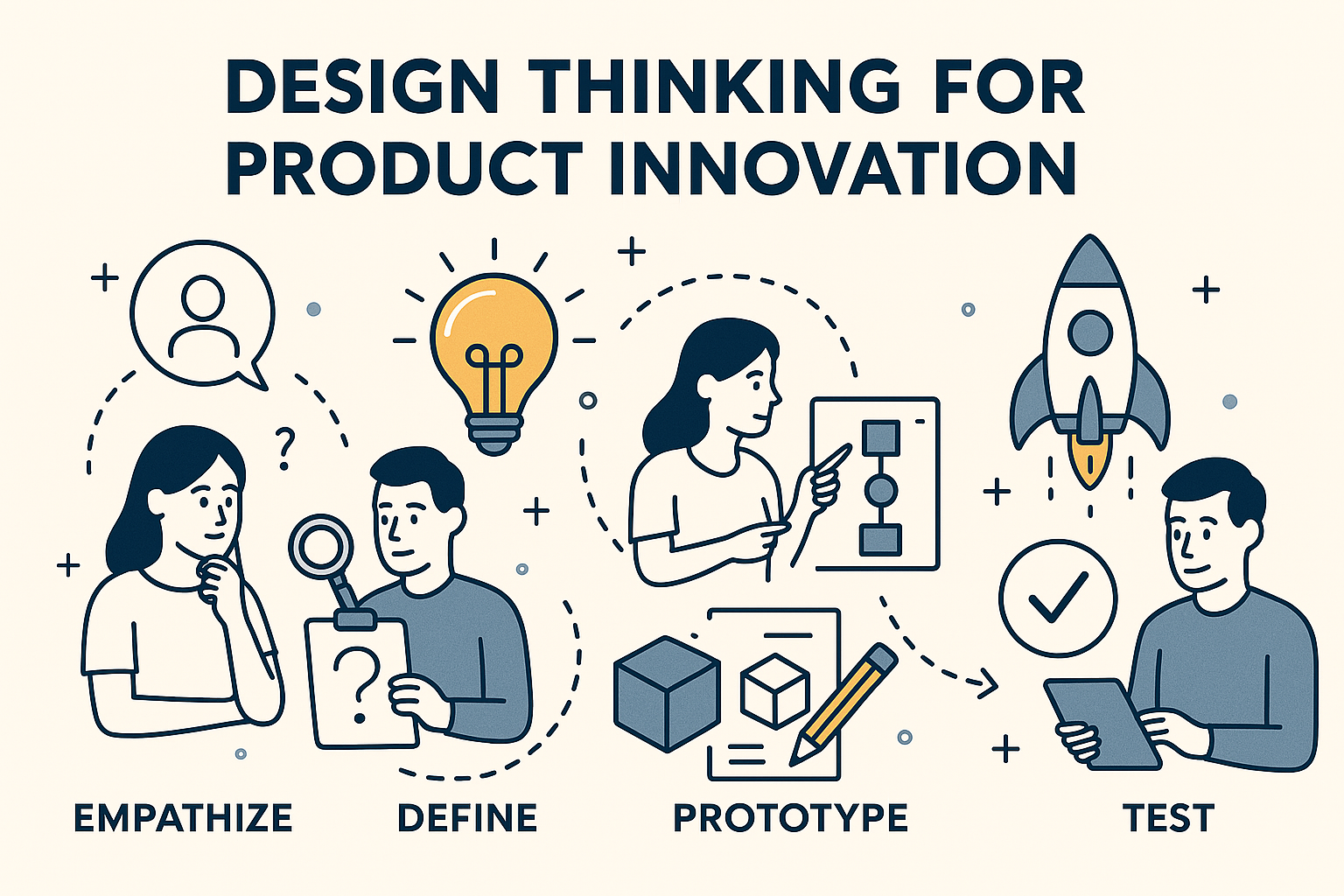Innovation isn’t about throwing tech at problems—it’s about deeply understanding people first. Design Thinking enables teams to unlock real product value by grounding every idea in human needs.
Why Design Thinking Matters in Product Innovation
In today’s fast-paced market, building products that function isn’t enough. You need products that resonate—ones that solve meaningful problems in ways users love. Design Thinking flips traditional engineering-led development on its head. Instead of starting with what’s technically possible, it starts with what’s humanly desirable.
At its heart, Design Thinking is a repeatable, user-centered framework for solving the right problems, not just solving problems right. It bridges the gap between what users truly need, what’s feasible to build, and what’s viable as a business.
The Five Phases of Design Thinking
1. Empathize
Go beyond analytics—observe, listen, and feel what users experience.
Conduct interviews, shadow users, map out emotional The goal isn’t data, it’s insight.
Real innovation begins when you understand unspoken needs.
2. Define
Synthesize findings to uncover the core problem.
Frame user challenges clearly—e.g., ―Young professionals need a simple way to invest because they feel overwhelmed by financial jargon.
A well-defined problem statement acts as your product’s compass.
3. Ideate
Gather cross-functional teams for divergent thinking—generate a wide range of solutions without judgment.
Use mind-mapping, ―how might we‖ prompts, and scenario exploration to think beyond constraints.
Creativity here is about volume, not polish—quantity breeds quality.
4. Prototype
Turn abstract ideas into tangible, testable artifacts—wireframes, paper sketches, or clickable demos.
Don’t aim for perfection; aim for learning. The purpose is to explore viability and usability quickly.
5. Test
Let real users interact with your Watch how they navigate, where they get stuck, and what surprises them.
Use feedback to refine or Design Thinking embraces iteration—failure is data, not defeat.
Benefits of Design Thinking in Product Development
User alignment: Reduces the risk of building features nobody wants.
Faster validation: Prototypes let you learn quickly, before expensive development.
Cross-team synergy: Encourages collaboration between product, engineering, design, and business teams.
Creativity unlocked: Allows room for non-obvious, breakthrough ideas to emerge.
Unlike rigid development lifecycles, Design Thinking keeps the team fluid and adaptive. It welcomes ambiguity and builds muscle for creativity, empathy, and experimentation—qualities essential for sustained innovation.
conclusion
Design Thinking is not a silver bullet—but it is a mindset that sharpens product intuition, fuels creativity, and centers everything around the user. In product innovation, the winning teams are not the ones with the best tech—they’re the ones who understand people best.
Innovation that starts with empathy tends to end with impact. Design Thinking ensures your product doesn’t just work—it matters.





